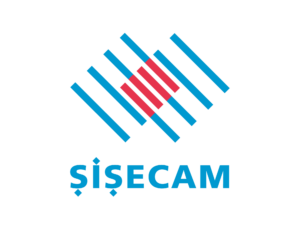Geistiges Eigentum (IP) ist einer der wertvollsten immateriellen Vermögenswerte eines Unternehmens und äußerst anfällig für Lecks, Diebstahl und andere Bedrohungen. Ihr geistiges Eigentum stellt einen entscheidenden Wettbewerbsvorteil für Ihr Unternehmen dar. Der Schutz geistigen Eigentums ist daher für Wachstum und Erfolg von entscheidender Bedeutung. Ohne eine Strategie zum Schutz Ihres geistigen Eigentums kann Ihr Unternehmen durch Rechtsstreitigkeiten und finanzielle Verluste Schaden nehmen.
Mit der Zunahme der Remote-Arbeit befinden sich vertrauliche Daten auf vielen Geräten und werden über viele Kanäle übertragen. Jeder greift unterwegs über sein Smartphone auf Dokumente zu und tauscht sich mit Kollegen aus. Dadurch sind IP-Lecks einfacher denn je.
Wenn Ihre IP-Assets kompromittiert werden, können sie in die Hände Ihrer Konkurrenten gelangen. Die Sicherung des geistigen Eigentums sollte für jedes Unternehmen, das heute geschäftlich tätig ist, oberste Priorität haben. IP hilft Ihnen, den Marktwert Ihres Unternehmens zu steigern, Ideen für Produkte und Dienstleistungen zu sichern, Ihre Patente oder Urheberrechte zu lizenzieren, eine einzigartige Marke mit Marken, Logos und Designs zu schaffen und Startkapital zu beschaffen.
Wenn Sie Ihr geistiges Eigentum nicht schützen, kann dies weitreichende finanzielle und rufschädigende Folgen für Ihr Unternehmen haben. Hier sind einige wirksame Möglichkeiten, wie Sie eine IP-Schutzstrategie planen können, um Diebstahl oder Verlust von geistigem Eigentum zu vermeiden.
Die 4 wichtigsten Arten von geistigem Eigentum
Bevor Ihr Unternehmen mit der Planung einer Schutzstrategie beginnt, ist es wichtig zu verstehen, welche Arten von geistigem Eigentum Sie besitzen, damit Sie wissen, wie Sie es am besten schützen können. Geistiges Eigentum umfasst Marken, Patente, Urheberrechte und Geschäftsgeheimnisse. Einige Arten von geistigem Eigentum sind von Gesetzes wegen geschützt, sobald sie geschaffen werden, andere benötigen für den rechtlichen Schutz die Erteilung von Rechten durch eine Behörde.
Es gibt vier Hauptkategorien von geistigem Eigentum. Geistiges Eigentum kann geschützt werden durch:
- Patente – schützen Erfindungen, Maschinen und bestimmte Computersoftware, die den technologischen Fortschritt vorantreiben.
- Marken – sichern Branding-Elemente für Marketingkampagnen, Logos, Slogans und Taglines.
- Urheberrechte – umfassen Originalwerke in den Bereichen Musik, Kunst, Fotografie, Design und anderen kreativen Bereichen.
- Geschäftsgeheimnisse – schützen Kundenlisten, Prozesse und Formeln, die einen einzigartigen Wettbewerbsvorteil bieten.
Patente, Urheberrechte und Marken werden in der Regel der Öffentlichkeit zugänglich gemacht. Der Schutz des geistigen Eigentums in diesen Bereichen ist mit Rechtsstreitigkeiten verbunden und erfordert kostspielige juristische Fachkenntnisse. Im Gegensatz dazu sollen Geschäftsgeheimnisse vollständig privat bleiben. Der Schutz von Geschäftsgeheimnissen hängt davon ab, dass während ihrer gesamten Existenz keine Informationen nach außen gelangen.
Aus diesem Grund ist es wichtig, bereits in der frühen Phase des Unternehmenswachstums einen Plan zum Schutz des geistigen Eigentums zu haben. Nur weil geistiges Eigentum kein materieller Vermögenswert ist, ist es nicht weniger wichtig, es zu schützen. Wenn Sie den Schutz geistigen Eigentums als Nebensache betrachten, kann dies das Überleben Ihres Unternehmens gefährden.
3 Schritte zum Schutz Ihres geistigen Eigentums
Es gibt drei wichtige Schritte, die Sie unternehmen können, um sicherzustellen, dass der Wert Ihres Unternehmens nicht durch den Verlust Ihres geistigen Eigentums zerstört wird.
1. Bestandsaufnahme Ihres geistigen Eigentums
Sie können nicht schützen, was Sie nicht kennen. Dies ist besonders wichtig in Fällen, in denen Technologien von Gründern entwickelt (Quellcodes, Prototypen oder Modelle) und von Mitarbeitern oder freiberuflichen unabhängigen Auftragnehmern verwaltet oder verbessert wurden.
Eine IP-Prüfung kann Ihnen dabei helfen, eine Bestandsliste der bestehenden und potenziell langfristigen geistigen Vermögenswerte Ihres Unternehmens zu erstellen. So können Sie Ihr geistiges Eigentum klar identifizieren und schützen und gleichzeitig seinen Wert voll ausschöpfen. In den meisten Fällen ist es am besten, diesen Prozess von einem Patent- oder Markenanwalt leiten zu lassen, der Sie bei der effektiven Verwaltung Ihres geistigen Eigentums beraten kann.
2. Bestimmen Sie den finanziellen Wert Ihres geistigen Eigentums
Wenn Sie eine Vorstellung vom Wert Ihres geistigen Eigentums haben, können Sie besser entscheiden, ob es sich lohnt, das geistige Eigentum als Patent oder Marke anzumelden und/oder den Lizenzierungsprozess voranzutreiben.
Es gibt Möglichkeiten, den Wert Ihres geistigen Eigentums mit quantitativen Methoden wie kostenbasierten und marktbasierten Kennzahlen aus ähnlichen Markttransaktionen in der Branche zu berechnen. Geistiges Eigentum kann auch mit qualitativen Methoden bewertet werden, z. B. durch die Bewertung Ihres Wettbewerbsvorteils, die Bewertung des numerischen Werts Ihrer IP-Vermögenswerte und die Analyse Ihres geistigen Eigentums mit einer statistischen Methode wie dem IP-Quotienten, der Patente anhand der Stärke Ihres Portfolios bewertet. Ein Patent- oder Markenanwalt kann Ihr Unternehmen ebenfalls bei diesem Prozess unterstützen.
3. Verhindern Sie Verluste von geistigem Eigentum, bevor sie entstehen
Da Patente, Marken und Urheberrechte öffentlich zugänglich sind, ist es möglicherweise am besten, jede Art von Schutz anzumelden. Je nach Ihrer spezifischen Situation müssen Sie häufig an verschiedenen Orten und in verschiedenen Märkten eine Anmeldung vornehmen.
Es ist wichtig, die lokalen Gesetze zum Schutz geistigen Eigentums zu kennen, da Patente und Marken weltweit unterschiedlich durchgesetzt werden können. Die Durchsetzung Ihrer Rechte an geistigem Eigentum nach einer Verletzung kann mühsam und mit hohen Kosten verbunden sein.
Geschäftsgeheimnisse vs. Patente: Was Ihr Unternehmen wissen muss
Es ist wichtig, dass Sie sich zunächst klar entscheiden, ob Sie ein Patent anmelden oder Ihr geistiges Eigentum als Geschäftsgeheimnis schützen möchten. Patente und Geschäftsgeheimnisse stellen gegensätzliche Optionen dar. Der rechtliche Schutz von Geschäftsgeheimnissen basiert auf ihrer Geheimhaltung. Im Gegensatz dazu ist eine öffentliche Offenlegung erforderlich, um den Schutz von Patenten zu ermöglichen.
Die spezifischen Details des Patents müssen beschrieben werden, um die Anforderung der „Ausführbarkeit“ zu erfüllen, damit auch nach dessen Ablauf andere das Patent nutzen können. Die Bewertung Ihrer Budgetbeschränkungen kann Ihnen bei der Entscheidung zwischen der Anmeldung eines Patents und der Geheimhaltung Ihres geistigen Eigentums helfen. Außerdem muss Ihr Patent die gesetzlichen Anforderungen an Neuheit, Nicht-Offensichtlichkeit und Nützlichkeit erfüllen, um genehmigt zu werden.
Ist dies der Fall, können Sie sich anhand der folgenden fünf Fragen vergewissern, ob Sie Ihr Patent anmelden sollten:
- Ist es nach 20 Jahren noch nützlich?
- Ist eine Rückentwicklung durch andere Unternehmen möglich?
- Ist es Teil eines Herstellungsprozesses oder in ein Produkt eingebettet?
- Ist es wahrscheinlich, dass es in Zukunft entdeckt wird?
- Ist es regelmäßig öffentlich zu sehen?
Die Antworten hängen von Ihrer besonderen Geschäftssituation und Ihren Bedürfnissen ab. Wenn Sie sich entscheiden, Ihr geistiges Eigentum als Geschäftsgeheimnis zu behandeln, gibt es bestimmte Möglichkeiten, seinen Schutz aufrechtzuerhalten, da Sie es nicht öffentlich anmelden können, darunter:
- Vertragliche Barrieren – Erstellen Sie Verträge und Vereinbarungen zum Schutz Ihres Unternehmens, z. B. IP-Lizenzen und Geheimhaltungsvereinbarungen (NDAs), Absichtserklärungen (MoUs), Arbeitsverträge und mehr.
Der Defend Trade Secrets Act (DTSA) in der EU und den USA war ein wichtiger Fortschritt im Recht des geistigen Eigentums. Dieses Gesetz ermöglicht es Inhabern von Geschäftsgeheimnissen, Klagen nach Bundesrecht statt nur nach Landesrecht zu erheben. Kläger können auch entscheiden, ob sie eine Klage vor einem Bundes- oder Landesgericht einreichen möchten, je nach ihren Erfolgsaussichten. Der DTSA hat eine breite Reichweite, die alle Geschäftsverträge mit einer Vertraulichkeitsvereinbarung regelt.
- Physische Barrieren – Kennzeichnen Sie sensible Dokumente als „VERTRAULICH“ und bewahren Sie sie an einem sicheren, geheimen Ort auf, der nach Geschäftsschluss verschlossen ist. Beschränken Sie den Zugriff und die Kopierrechte auf das Personal, das diese benötigt. Alle Besucher sollten registriert werden und niemals unbeaufsichtigt bleiben. Die Mitarbeiter, denen Zugriff gewährt wird, sollten vor dem Betreten privater Bereiche Ihres Unternehmens eine Geheimhaltungsvereinbarung unterzeichnen müssen.
- Technische Barrieren – Setzen Sie geeignete Lösungen für die Sicherheit von Dokumenten und Datenräume für die Speicherung und den Versand von IP-Dateien ein. Es ist wichtig zu beachten, dass der Besitzer eines Geschäftsgeheimnisses angemessene Maßnahmen ergreifen muss, um es geheim zu halten, damit es als Geschäftsgeheimnis gilt.
So schützen Sie geistiges Eigentum mit Digify
Die Verhinderung der Weitergabe von Geschäftsgeheimnissen ist oft kostengünstiger als die nachträgliche Einleitung rechtlicher Schritte. Maßnahmen zur Verlustprävention und zum Schutz des geistigen Eigentums sind in den meisten Fällen effizienter als deren Durchsetzung.
Daher ist es Aufgabe des Unternehmens oder des Besitzers des geistigen Eigentums, als ersten Schritt angemessene Schutzmaßnahmen zu ergreifen. Dies sollte damit beginnen, Dokumente eindeutig als „VERTRAULICH“ zu kennzeichnen und Partner und Nutzer darüber zu informieren, dass diese Dokumente nicht der Öffentlichkeit zugänglich gemacht werden dürfen.
Die Sicherheit von Dokumenten und Datenräume von Digify sind ebenfalls ein wichtiger Bestandteil einer umfassenden Strategie zum Schutz geistigen Eigentums und bieten Unternehmen folgende Vorteile:
- Kontrollieren Sie den Zugriff auf vertrauliche Dokumente mit geistigem Eigentum intern und extern, beispielsweise von mehreren Standorten im Ausland oder während Finanzierungsrunden und Due Diligence.
- Verfolgen Sie, wer Ihre vertraulichen Dokumente einsieht, damit Sie bei Bedarf Maßnahmen ergreifen und den Zugriff widerrufen können.
- Legen Sie Zugangsbedingungen und Vertraulichkeitsvereinbarungen fest, denen die Empfänger zustimmen müssen, bevor sie vertrauliche Dokumente mit geistigem Eigentum einsehen können.
- Sie können das Kopieren und Herunterladen einschränken und gleichzeitig unbefugtes Versenden mit dynamischen Wasserzeichen verhindern.
- Sie vereinfachen die Benutzerfreundlichkeit, indem Sie alle IP-Schutzfunktionen, die Ihr Unternehmen benötigt, auf einer einheitlichen Plattform kombinieren, ohne separate Tools installieren zu müssen.
Die sicheren virtuellen Datenräume von Digify sind in wenigen Minuten eingerichtet. Senden Sie Dokumente sicher an Ihre Empfänger, damit Ihr Unternehmen Geschäfte schneller abschließen kann. Der Zugriff auf vertrauliche Geschäftsdokumente ist einfach und sicher, und Sie können diese nach dem Versand schützen, verfolgen und kontrollieren. Holen Sie sich noch heute Ihre kostenlose Testversion, um mit Digify den Schutz Ihres geistigen Eigentums zu gewährleisten.
**Digify bietet keine Rechtsberatung an. Ihr Unternehmen sollte sich in Bezug auf Ihre spezifische IP-Situation professionell beraten lassen.








